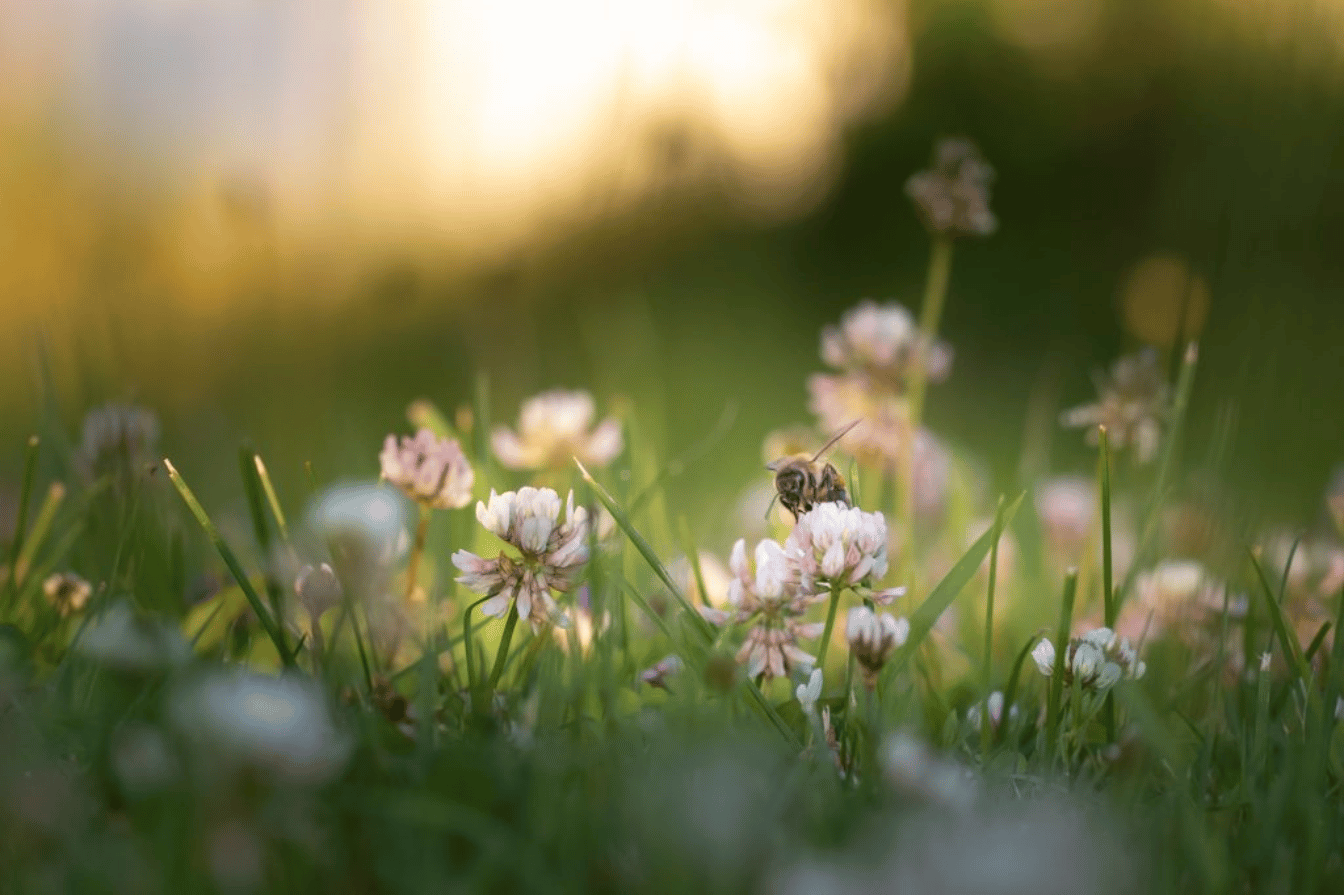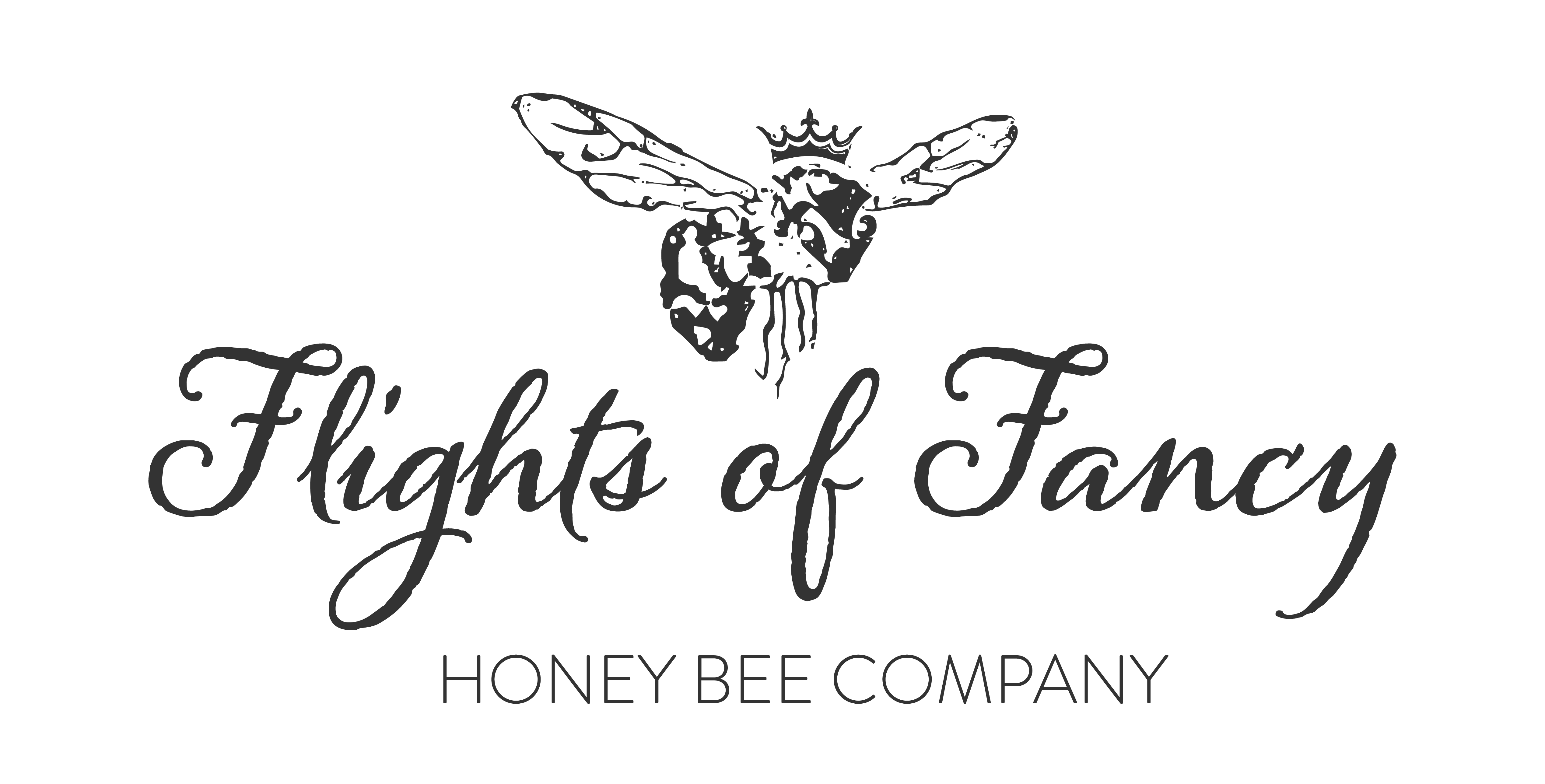The Power of White Clover: How This Humble Plant Can Benefit Pollinators and Your Soil

White clover benefits pollinators & soil, but how? Trifolium repens, or white clover, originated in Europe but has been introduced to North America, Australia, and other regions. Despite frequent labeling as a weed, it offers numerous advantages for pollinators.
In this blog post, we will explore the benefits of growing white clover, its uses in your yard, and how it can benefit your soil.
White Clover Benefits for Pollinators
One of the most significant benefits of growing white clover is that it is an excellent source of nectar and pollen for pollinators. White clover flowers from May to September and produces abundant flowers. Its prolonged blooming period attracts bees, butterflies, and other pollinators, making it an attractive food source.
White clover is also a preferred food source for honeybees because it is high in nectar sugar and has a long blooming period. In fact, bees will often visit white clover flowers before other nectar sources because of its high sugar content.
Another benefit of growing white clover is that it can help support declining pollinator populations. The use of pesticides and loss of habitat has led to a decline in bee and butterfly populations. Planting white clover can provide a much-needed food source for these important insects.
Uses in Your Yard
In addition to its benefits for pollinators, white clover has several uses in your yard. One of the most popular uses is as a ground cover. White clover has a low-growing habit and can spread quickly, making it an ideal ground cover for areas where grass may not grow well.
White clover can also be used in lawn mixtures as an alternative to traditional grasses. Clover is a legume, which means it can fix nitrogen from the air and convert it into a form that plants can use. This nitrogen fixation can benefit other plants in the lawn and reduce the need for synthetic fertilizers.
Another use of white clover in your yard is as a companion plant for vegetables. By fixing nitrogen in the soil, white clover can help improve soil health, providing benefits for nearby plants. Additionally, white clover can help suppress weeds and reduce soil erosion, making it an ideal companion plant for vegetables.
White Clover Benefits for Your Soil
White clover has several benefits for your soil, including nitrogen fixation, weed suppression, and erosion control. As mentioned earlier, white clover is a legume, which means it can pull nitrogen from the air and convert it into a form that plants can use. This nitrogen fixation can benefit other plants in the soil, reducing the need for synthetic fertilizers.
White clover can also help suppress weeds in your soil. The low-growing habit of white clover can help shade out weeds and prevent them from growing. Additionally, white clover can produce chemicals that are toxic to some weeds, further reducing weed growth in your soil.
Finally, white clover can help control erosion in your soil. The dense root system of white clover can help hold soil in place, reducing erosion caused by wind and water.
White Clover Benefits Pollinators & Soil: Get Planting
Growing white clover can have many benefits for pollinators, your yard, and your soil. White clover is also an excellent source of nectar and pollen for bees and other pollinators. It provides resources that can help support declining pollinator populations. White clover also has the ability to improve soil health through nitrogen fixation, weed suppression, and erosion control. While also being used as a ground cover and a companion plant for vegetables.
If you are considering adding white clover to your yard, it is essential to choose the right variety for your needs. Some varieties are better suited for ground cover, while others are better suited for use in lawn mixtures or as a companion, make sure you choose the right variety, so your white clover benefits pollinators & soil.
Where To Get Dutch White Clover Seeds
Let’s Feed Some Bees Program: Every Flights of Fancy order between March 20th – May 30th receives a free packet of pollinator seeds. There are seven options to choose from, one of the seed options is Dutch White Clover (while supplies last), place your order and receive some free seeds!
How to Grow Dutch White Clover
Equipment
- Dutch White Clover Seed
Instructions
- Choose a location: Dutch white clover grows best in well-drained soil that receives at least 4 hours of sunlight per day. It can also tolerate partial shade.
- Prepare the soil: Remove any weeds or grass from the area where you plan to plant the clover. Use a rake or hoe to loosen the soil to a depth of 2-3 inches.
- Plant the clover: Dutch white clover can be planted in the spring or fall. Scatter the seeds over the soil and then lightly rake them in, making sure they are covered with a thin layer of soil. You can also mix the seeds with sand or soil to help distribute them more evenly.
- Water the clover: After planting, water the area lightly to help the seeds germinate. Keep the soil moist until the clover is established.
- Maintain the clover: Once the clover is established, it requires little maintenance. It should be watered during dry spells, but otherwise, it can tolerate periods of drought. Mowing or trimming the clover occasionally can help keep it looking neat and prevent it from becoming too tall.
You might also be interested in some of our other gardening for pollinators posts:



About The Author
Related Posts
Garden to Teapot: Growing Your Own Tea While Helping the Bees
Learn how to create a tea garden that doubles as a pollinator garden with this…
April 21, 20237 Heavenly Honey and Tea Combinations to Try on National Tea Day
Looking for a way to celebrate National Tea Day? Check out our blog post featuring…
April 8, 20231 COMMENT
Leave A Comment
Error: API requests are being delayed for this account. New posts will not be retrieved.
There may be an issue with the Instagram access token that you are using. Your server might also be unable to connect to Instagram at this time.





Let's Feed Some Bees: Year Three - Flights of Fancy Honey Bee Company | 28th Mar 23
[…] Another benefit of growing white clover is that it can help support declining pollinator populations. The use of pesticides and loss of habitat has led to a decline in bee and butterfly populations. Planting white clover can provide a much-needed food source for these important insects. Learn more about growing Dutch White Clover here. […]